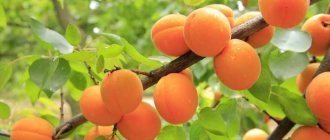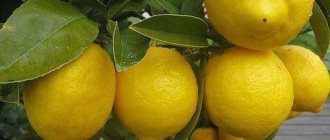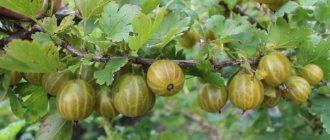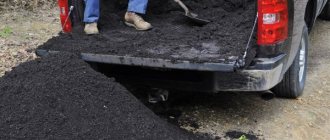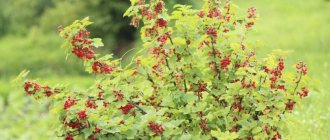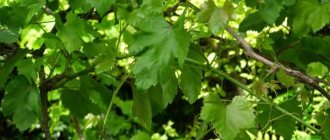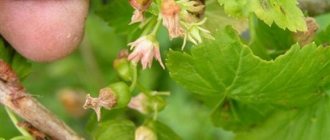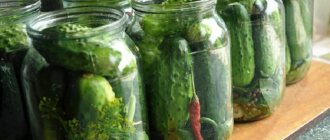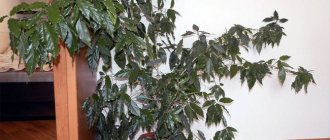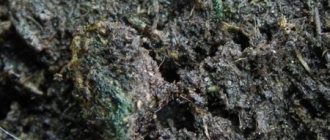Cherry is one of the most common and most beloved trees by gardeners. It is stunningly beautiful during the flowering period, and starting in mid-summer you can pick tasty and healthy berries. Cherries are used to make preserves and jams, make compotes, make wine and liqueur, and also freeze and dry them. But it happens that the tree practically stops blooming, which means you can’t count on a harvest. Flowering and fruiting are influenced by various factors, and in most cases the situation can be improved by studying the problem and taking more careful care of the cherry. Experienced gardeners identify seven main reasons why cherries do not bear fruit; you can learn more about each of them in this article.
Why cherries don’t bear fruit well: the wrong place for planting is chosen
This is perhaps the only factor in which it will be problematic to correct the situation that the cherry tree does not bear fruit, since it is not recommended to replant an adult tree; there is a very high probability that it will die. Cherry loves the sun very much; for normal functioning it needs carbohydrates, and they begin to be produced only with a sufficient amount of sunlight. So if you are just planning to plant a cherry tree, keep in mind that it needs the sunniest place, in this case there will be no questions about why the cherry tree does not bloom or bear fruit.
Care errors
If a tree blooms but does not produce berries, you must first find an answer to the question: why does the cherry tree not bear fruit?
General condition of the tree
An experienced gardener will understand by appearance that something is wrong with the tree. There are not enough nutrients, there is not enough moisture or it is sick.
Incorrect pruning
It is important to adhere to pruning deadlines. It is done in the spring, while the buds have not yet swelled. Otherwise, the branches responsible for the formation of berries dry out and there will be no harvest. Autumn pruning can generally lead to the death of the tree. In bush cherries, they try not to shorten the annual shoots, since it is on them that the berry buds are formed. Tree cherries, on the contrary, are annual.
Photo: © yagodka.club
Nutrient deficiency, unbalanced feeding
The tree must receive all the necessary nutrients: macro- and microelements. Thanks to phosphorus and potassium fertilizers, flower buds ripen better. Nitrogen is used sparingly, otherwise the cherry will increase green mass to the detriment of flowering. In order for fertilizing to reach the roots faster, it is advisable to dig grooves 30 cm deep at a distance equal to the perimeter of the crown. Nutrients are placed in them, covered with earth.
Rotted manure cannot be used; this can lead to rotting of the roots and death of the tree.
Treatment with chemicals
Without spraying, it will not be possible to protect cherries from the most dangerous diseases. But some drugs are phytotoxic. Widely used copper-containing fungicides—copper oxychloride and Bordeaux mixture—can cause burns, especially in hot weather.
The influence of diseases and pests
Coccomycosis, moniliosis, and white fruit rot can not only leave the gardener without a cherry harvest, but also cause the death of the tree. In addition, various sucking and leaf-eating insects cause harm. They not only weaken the plants, but also create a gateway for infections, including fungal ones. Preventive vaccinations (a new direction for our country) and timely treatment will help cope with these problems.
The tree is sick as the reason why the cherry does not bear fruit
Carefully inspect the tree; often the reason for the lack of fruiting of cherries is the diseases “moniliosis” or “coccomycosis”. In the first case, the tree looks as if it has been scorched by fire, flowers and foliage, fruits and branches dry out. The development of the disease begins from the moment flowering begins; high air humidity is very favorable for this.
With “coccomycosis,” small brown spots become noticeable on the foliage; they can be identified in late spring or early summer. Then the foliage begins to turn yellow, curl and dry, and then fall off.
These diseases can be avoided by carrying out timely prevention. Be sure to regularly do sanitary pruning, and do not forget that garden tools must be sharp and disinfected. Treat the cuts with garden varnish. Remove and burn all plant debris, be sure to loosen the soil around the tree trunk, and put special belts with an adhesive layer on the trunk, which will make it difficult for pests to access the foliage, buds and branches of the tree. In addition, spray the trees in a timely manner with preparations that will protect the cherries from diseases and the invasion of harmful insects.
How to resume regular fruiting of a crop
If there is a lack of fruit on an adult cherry for several years in a row, a set of measures is taken to resume fruiting.
We follow the rules of agricultural technology
For the timely development and formation of berries when growing cherries, it is necessary to adhere to several agrotechnical conditions:
- choose a suitable place for planting;
- prepare the ground;
- plant zoned varieties in accordance with the necessary agrotechnical requirements;
- select appropriate neighboring crops;
- enrich poor soil with fertilizer;
- organize abundant watering;
- mulch the soil with humus;
- carry out formative pruning annually.
The above measures contribute to the growth of a young tree, the correct formation of the crown and timely fruiting in large quantities.
We normalize the yield
When fruiting is low, outside intervention is required. To maintain yields at a sufficient level, the following measures must be taken:
- organize reliable protection of the tree from frost in winter;
- ensure uniform access of sunlight to the leaves by pruning in spring;
- attract insects for active pollen exchange;
- carry out preventive treatment and prevent the development of diseases and the appearance of pests.
We treat diseases
Early detection of abnormalities in the development of cherries allows timely treatment measures to be taken in the early stages of the disease and save the harvest. Carrying out periodic disease prevention prevents the occurrence of diseases and preserves productivity.
We destroy pests
Annual spraying before flowering with insecticides destroys aphids, leaf beetles, weevils and other pests. After flowering, re-treatment is carried out.
Soil composition and high acidity level
It is extremely important to know the acidity level of the soil in your summer cottage, since depending on this you will need to add certain substances to it. Most plants grow very poorly in acidic soils, and cherries are no exception. Chalk, lime or dolomite will help normalize the acidity level - they should be distributed in the tree trunk circle. For very acidic soil, you will need 500 g of dolomite per square meter; in the case of an average acidity level, it will be enough to add 300-400 g to the same area.
When normalizing the acidity level, we must not forget about fertilizing; the most suitable for cherries will be mineral fertilizers in liquid form and not in very large quantities. In the spring, it is necessary to fertilize with nitrogen; this will help the tree grow foliage faster and carry out photosynthesis processes. But in the autumn it is necessary to apply potassium and phosphorus fertilizers; they will ensure flowering and fruiting next year. You can fertilize cherries with organic matter using humus and compost. But never use fresh manure as fertilizer, as it burns plant roots.
What you need to do to force and increase fruiting
To get a high yield of cherries, it is necessary to organize proper care for them, and this, first of all, watering and fertilizing.
During the entire growing season, the cherry orchard needs to be watered at least three times:
- in the last days of May, when shoots are actively growing;
- 14 days before harvest;
- immediately after picking cherries.
Watering should be plentiful.
60 liters should be poured under each fruit tree. To retain moisture, you can additionally mulch the soil around the tree. In the spring, you should definitely loosen the soil around the area to improve the flow of water and air to the root system. If a tree experiences waterlogging due to frequent rains, then the soil under it must be loosened more often to increase the evaporation of moisture. In autumn, cherries are not moistened due to the likelihood of frost. The key to a good harvest of cherries is fertilizing - they begin to be produced 3-4 years after planting the seedling.
Important! If groundwater is nearby, then the cherries can be planted on mounds about 1 m high, that is, they do not dig a hole. It is advisable to drain groundwater and water that accumulates.
Gardeners recommend doing the following:
- The first fertilizing is carried out when the snow has not yet completely melted. For this purpose, nitroammophoska (or azofoska) is added at the rate of 45–50 g per 1 m².
- The second feeding is carried out during flowering. First, potassium-nitrogen fertilizers are applied to the area around the cherry at the rate that 18 g of each element is consumed per 1 m². Then, after this, a layer of organic matter, at least 3 cm thick, is distributed around the trunk. Compost, as well as manure and humus, are well suited as organic fertilizer.
- The third application of nutrients is carried out after flowering at the stage of fruit formation. Phosphorus-potassium fertilizers are applied to the soil. This feeding promotes the appearance of more buds for fruiting next year. In addition, the fruits will be larger in size.
Video: fertilizing cherries
You can also do foliar feeding. It is carried out 10 days after the start of flowering. The spraying solution is prepared as follows - 1 table. spoon of urea per 10 liters. After 14 days, it is advisable to carry out this treatment again. This procedure will promote abundant fruit production. Gardeners also recommend fertilizing the soil around the cherry trunk with crushed egg shells and chalk.
We recommend that you familiarize yourself with the features of cherry grafting in the spring.
If the cause of crop failure is high acidity of the soil, then it should be limed. If there is excessive accumulation of water, it will be necessary to make drainage grooves and holes. The thickened crown is pruned. If there is a tree shading the cherry tree growing nearby, it needs to be pruned. When the first signs of disease are detected, all affected areas are cut off and fungicidal preparations containing copper are used. Treatments against insect pests are carried out with copper oxychloride, Karbofos, and Benzophosphate.
Close proximity of unsuitable crops
Every year, when planning plantings in the garden, we take into account the rules of crop rotation: the previous crop determines the next one, not all of them can grow next to each other, giving a good harvest. But trees grow in one place all their lives, so we need to find suitable “neighbors” for them so that everyone feels comfortable. Cherry is very capricious in choosing neighbors; there are a number of crops that will negate all your efforts and deprive you of a cherry harvest: it is better not to plant any coniferous plants, honeysuckle, pears and apple trees in close proximity to cherries (or cherries from them, depending on who appeared on the site first).
Flowers are often planted in the tree trunks of fruit trees; this is very beautiful, but for cherries it will be very unfavorable to be in the vicinity of pansies, lilies, daffodils, irises and tulips. But possible and even desirable neighbors include barberry, any grape varieties, lilac or jasmine. You can place raspberries and garden strawberries, vegetable crops (beets, lettuce, onions, cucumbers or pumpkin), as well as some flowers: gladioli, calendula, lupine and marigolds next to the cherries.
The presence of friendly companion plants
There remains free space between the cherries, which is difficult to use for growing other useful plants. Most often, tree trunk circles are overgrown with weeds or seeded lawn grass. But in the shade of cherries you can also plant garden crops:
- greens (parsley, celery, lettuce, chives or other onion);
- flowering annuals (marigolds, hosta, lupine, nasturtium and other shade-tolerant plants);
- berries (raspberries or strawberries);
- peas and green beans.
Companion plants may be useless to the tree, but sometimes they additionally enrich the soil with nitrogen (like legumes).
Why cherry blossoms but does not bear fruit: poor pollination
There is such a thing as “self-sterility” - when plants of the same variety are pollinated with pollen, fruits are not set. Unfortunately, most varieties of cherry trees are self-sterile, so at least two different varieties of cherries should grow on your site and they must be selected taking into account individual characteristics. In this case, it is best to consult a specialist. In addition, during the flowering period, you can spray the trees with water with sugar or honey - this will attract beneficial insects (bees and bumblebees) to your garden, which will help with the pollination process.
Sunny place
For a cherry orchard, it is worth setting aside an area where the sun will illuminate the trees at least in the first half of the day. Insolation during the entire daylight hours will be optimal: most varieties were bred for the southern regions, so they are demanding of heat and light. In bright sunshine, the fruits ripen faster and more evenly, and their taste becomes higher (the berries are sweeter). A large amount of sun stimulates the process of photosynthesis and the production of carbohydrates, some of which are used to feed the plant, and some of which end up in the fruit.
In central Russia, Siberia and the Urals, the optimal location for cherries will be near the southern wall of the building. In addition to receiving the maximum amount of light, it will be easier for plants to endure cold winters, awaken earlier, bloom and bear fruit.
Planting cherries. The illustration for the article is used under the standard license ©ofazende.ru
Incorrect crown formation
In this case, we are talking about sanitary and anti-aging pruning, and the opinions of gardeners on this issue differ. Some do not recommend pruning a cherry tree for the first couple of decades, arguing that the tree takes a very long time to cut and spends a lot of effort on it. But the majority is inclined to believe that proper, timely pruning will benefit the tree and significantly improve fruiting. The main thing is to prepare the tools well and then process the sections.
Reason 6: Improper pruning of cherries
You can often come across advice not to prune this crop at all until the age of 20, because it reacts painfully to this procedure. There is a high probability of infection, since cherry cuts take a very long time to heal. But if you do everything according to the rules, then such troubles will not arise. And with proper pruning, the tree will bear fruit better.
- Cherry pruning - forming the correct crown year after year
How and when to prune cherries so that they always produce a good harvest.
- How to properly prune cherries?
Several rules for pruning cherries.
Spring frosts are the reason why cherries do not bear fruit
In spring, return frosts often occur, during which you can almost completely lose the future harvest if the cherry trees have managed to bud or bloom. So, carefully monitor the weather forecast and take the necessary measures in a timely manner. Smaller trees can be wrapped in geotextiles at night. You can also use smoke or sprinkling. In the first case, this is a large fire on the leeward side, and in the second, it is irrigation of the tree crowns. Both actions must be carried out just a few hours before frost, and they come closer to the morning. Also, at the beginning of spring, you can spray cherries with Epin-Extra or Novosil; these drugs increase plant immunity and help withstand unfavorable environmental conditions.
To protect trees from autumn frosts, starting from mid-summer, eliminate fertilizers containing nitrogen and do not water in late autumn; the last water-recharging watering in October is sufficient.
By following all the basic rules of care, you will definitely ensure that such a problem as the fact that the cherry tree does not bear fruit will not overtake you.
Causes
Cherry is a rather demanding crop. To get a harvest, a number of conditions must be met:
- choose the appropriate variety - whatever the characteristics of the cherry, but if you try to grow a heat-loving cherry in an area with a cold, long winter, nothing will work. Even if the tree survives, berries are unlikely to appear;
- plant plants in the southern part of the garden and provide mandatory access to the sun - cherries cannot tolerate shade. Even when the tree is partially shaded, flowers and ovaries appear only on those branches that remain in the sun;
- grow the crop on neutral soils - cherries do not tolerate even slightly alkaline soil. It is somewhat more tolerant of slightly acidic ones. It does not tolerate swamps at all and practically does not produce crops in the lowlands;
- protect the tree from cold wind - it poses almost the same danger as frost, so cherries should not be planted in windy areas.
If any of these conditions are not met, the cherries begin to hurt, grow poorly, and lose flowers and ovaries.
The absence of berries may be caused by failure to fulfill the conditions, may be indirectly related to them, or may have specific reasons, related to both errors in agricultural technology and accidental ones.
Diseases
Even if all the rules of agricultural technology are followed, the tree can get sick. The risk is especially high in rainy summers, when high humidity causes fungus to become active. The most common diseases found in cherries are:
- coccomycosis - the first victims are the leaves: they become covered with brown spots, wither and fall off. Then the disease is transmitted to the flowers and the latter also die and fall off, leaving no ovary. If left untreated, the tree may dry out completely;
- monilial burn - activates in early spring. The leaves become brown, wither and dry out. The fungus also travels along the peduncle to the flowers. The petals become covered with a specific whitish coating and then wither. The ovary does not form;
Find out about the medicinal properties of Indian onions in this article.
The fungus attacks the buds and peduncles. As a result, photosynthesis is disrupted in emerging young leaves.
- Clusterosporiosis - small holes appear on the leaves in the spring, and a yellowish coating appears on the surface of the leaf. After blooming, the flowers become covered with brown spots, dry out and fall off.
To prevent the occurrence of diseases, it is necessary to spray the cherries with Bordeaux mixture or copper sulfate solution even before the buds swell.
The fungus is spread by insect pests: aphids, codling moths, cherry weevils. The latter is dangerous in itself, as it damages the flowers. Special insecticides are used to kill pests.
Bad landing site
Cherry is a heat-loving and light-loving plant. Accordingly, it can only be planted in certain areas of the garden.
- Sun access – the tree should be in the sun all day. Cherry does not tolerate even partial shade. At the same time, the tree itself weakens, and the berries do not set.
- Increased or decreased acidity - for the successful development of a tree, neutral soil with a pH value of 7 is needed. Even slightly alkaline soil slows down the growth of the plant, which leads to the loss of ovaries or flowers.
If the soil on the site does not meet these requirements, it is necessary to acidify it using peat, for example, or introduce dolomite flour to increase alkalinity.
- High groundwater level - the optimal level for cherries is no more than 1.5 m. With more abundant water, and even more swampy, the root system of the plant begins to rot. Drainage partially solves this problem, but only with a slight deviation.
- A windy area is also not suitable. It’s just that strong gusts of even warm wind break the thin branches of a plant, especially a young one. A cold wind overcools cherries no worse than frost.
Nutrient deficiencies
Radonezh, Zhelezistaya and Ural Standard cherries, like other varieties, are not too demanding on fertilizing: for a healthy adult tree, fertilizers are applied once every 3 years. However, a young plant needs more careful care.
The main mistake gardeners make is planting a seedling in a hole without first applying fertilizer. Such an experiment will be successful only if the cherry is planted in black soil. For any other soils, preliminary fertilizing is necessary. Read how to treat cherries against worms and other insects here.
Adding fertilizer to the hole immediately before planting will not be beneficial. Undissolved nutrients will cause root burn and the seedling may die.
The young tree needs to be fed in the spring - ammonium nitrate and urea are introduced to stimulate the growth and development of buds. In the fall, add superphosphate, potassium chloride or ash. If this is not done, the tree will wither and will not be able to bloom and bear fruit. You cannot change the order of fertilizer input: nitrogen stimulates the growth of cherries. If it is introduced in the fall, the tree will not be able to prepare for winter and will suffer from frost. This material will tell you about the characteristics and description of the Orange tomato variety.
Flowers and ovaries fall off both from a lack of nitrogen and from its excess, so you need to apply the recommended amount.
Bad neighborhood
Cherry is demanding not only of its own conditions of detention, but also of its neighbors.
- The tree does not tolerate proximity to any conifers. The apple tree and honeysuckle growing nearby also do not contribute to the harvest. Even some flowers are “unpleasant” neighbors: pansies, for example, daffodils, lilies, tulips, irises.
- Cherries go well with grapes and barberries. Not at all against garden crops, like corn, beets, cucumbers, pumpkins. In addition, it feels good next to shrubs - lilac, jasmine, raspberry, as well as flowers - rose and primrose.
Some crops can be sown in the tree trunk, for example, marigolds, gladioli, lupins, peas. They are nitrogen accumulators in the soil and thus maintain the required level of nitrogen-containing substances in the soil. Find out about planting and caring for Bessonovsky onions here.
No pollinators
Most cherry varieties are cross-pollinated plants. When pollinated with its own pollen, such a tree produces no more than 5–7% of berries. Partially self-fertile cherries can pollinate up to 20%. Self-fertile varieties provide the appearance of an ovary from 50% of the flowers.
Even self-fertile cherries produce greater yields if they are pollinated by a suitable pollinator plant.
To ensure a harvest, at least 2 varieties of cherries are planted on the site, and preferably three, selecting them so that the flowering dates of the trees coincide.
The most famous pollinators are the Lyubskaya, Vladimirskaya, Nord Star, and Molodezhnaya varieties. The maximum distance between pollinated plants is 40 m, and in order to accurately attract bees to a flowering tree, the flowers are sprayed with a sugar solution.
Incorrect pruning
Like any fruit crop, cherries also need pruning. A thick crown with a large number of long and almost empty branches does not produce a good harvest. However, an incorrectly performed procedure only brings harm.
- Most of the harvest is formed on bouquet branches. If they are removed during pruning, the tree will not produce a crop until new branches grow.
Bouquet branches bear fruit on tree-like cherries, and do so for several years. Shrub berries are produced only from annual shoots. This must be taken into account when pruning a tree.
- When a large number of branches are removed - up to 2/3 of the total volume - the tree stops bearing fruit. The plant needs time to recover. If the pruning itself was done correctly, then next year the tree will give a good harvest.
- Insufficient pruning leads to a gradual decrease in yield or its complete disappearance. When the crown is very neglected, sunlight does not penetrate to the flowers and ovary, so that the berries, even when they appear, cannot grow or ripen.
Cuts on cherries take a long time to heal. Pruning is done very carefully, using sharp pruning shears, and the cuts must be covered with garden varnish.
Freezing
Cherry is a heat-loving plant and does not tolerate frosty, much less snowless, winters. Trees need protection, even if the variety is frost-resistant. Young trees are covered for the winter even in relatively warm areas.
Cold in any form - frost, a large difference between day and night temperatures, cold wind, can not only deprive the cherry of the harvest, but also destroy the tree.
- This primarily concerns the cold, long winter. Cherry branches are thin; in severe frosts they become very brittle and brittle, and the buds freeze, starting from the end of the branch. Since tree cherries bear fruit from bouquet branches, simple freezing without damaging the trunk is enough to prevent the berries from appearing the next year - there are no buds.
- Frost promises no less danger to the roots. The cherry root system is superficial. If frost occurs after snow has fallen, the latter will protect the roots from the cold. But if there is no snow, then the roots are damaged in the frozen ground. In the spring, the tree, even if it remains alive, will not produce either color or ovary, since it is too weak.
- Another threat is return frosts. They occur after a fairly long period of warm weather and usually just at the time of flowering of fruit trees. Alas, even short spring frosts are enough to destroy the color.
The same situation occurs if, after a too warm autumn, frosts suddenly occur, and then warm weather returns. If autumn is warm, cherries cannot enter a dormant period. Sometimes a too warm autumn leads to the appearance of new buds, including flower buds, and even to flowering. Under the influence of the very first frosts, both the flowers and the buds die, and the following spring the cherry does not bloom or bear fruit.
- The reason for the lack of berries can also be a large difference between day and night temperatures, especially in combination with sunny weather. The fact is that in the sun the bark heats up quite strongly, which activates the growth and development of the buds. Then, with the onset of darkness, the temperature drops sharply, and the wood tissue does not have time to react in time. Accordingly, the most tender parts of the cherry - the buds - may die.
This link will tell you about the description of the Radar onion variety.
Whitewashing the trunk and skeletal branches helps reduce the difference between the temperature of a sunny day and a cold night. White reflects sunlight and the bark doesn't get as hot.
Damage by diseases and pests
The disease affects different parts of the tree: fruits, leaves, bark. There are quite a lot of diseases, but only two of them affect cherry fruiting more than others.
The first disease is coccomycosis. You can notice it by the leaves: there will be a small black rash on them. This infection interferes with the ripening of wood and can reduce the tree's resistance to frost. Thus, during frosts, flower buds suffer serious damage, and the plant does not bear fruit.
The second disease is moniliosis or gray fruit rot. The disease affects the peduncle and wood of the shoot. As a result of the actions of rot, the branches and leaves of the tree dry out and the fruits rot. The plant can become sick due to insects that carry this infection: aphids, codling moths and cherry weevils. The last one from this list is itself capable of causing great damage to the tree, as it damages the flower and the bud.
Technique 3. Attract pollinating insects.
The consequences of the widespread destruction of bees due to the use of pesticides are visible to the naked eye: if earlier in the spring an unimaginable number of “pollen carriers” flew and buzzed in the cherry thickets, now from time to time some lonely bumblebee appears and that’s it. What should a summer resident do in such a situation? Try attracting pollinators to your cherries, for example, by spraying them with sweet water. For this purpose, 10-20 grams of sugar (or 1 tablespoon of honey) are dissolved in 1 liter of water and sprayed on the flowers.
You can also spray the cherries with preparations such as “Bud” or “Ovary” even before the buds open. They stimulate the development of the ovary even in the absence of insects.
General condition of cherries
The tree stops bearing fruit abundantly if the crown of the plant thickens. Try not to skip such a procedure as constantly removing dead wood. Thus, the plant will be stronger, healthier, less sick, and will produce new shoots faster. Among other things, it is necessary to provide the crop with sufficient light and shade conditions, as well as timely correction of the crown from the inside.
There are varieties of cherries that grow as bushes. This is the felt cherry, which is not at all afraid of coccomycosis and easily tolerates low temperatures. This culture came to us from the Far East. Cherry got its name because of the fibers on the shoots and leaves, which are similar to felt. This variety pleases with abundant fruit harvests. The tree is self-sterile, therefore, in order for the harvest to be good, you will need to plant another tree next to the felt cherry. Despite the fact that this plant is not afraid of the main enemy of cherry trees - coccomycosis, the crop is often attacked by a parasite such as moniliosis. To protect shrubs and other garden trees from fruit rot, you will need to remove the infected areas and then treat the plants with Fungicide. If after the procedures the disease does not disappear, you will have to part with the cherry bush as soon as possible. Otherwise, fungal spores will spread to neighboring trees.
If the cherry blossoms profusely but bears fruit poorly, you should pay attention to fertilizing. Proper application of fertilizers will help improve the situation
When doing spring digging, it is necessary to add potassium fertilizers (80 g) and phosphorus (220 g) to the soil. During the growing season, cherries should also be fed. The first application of additives is made after flowering. To do this, urea (16 g), potassium chloride and superphosphate (28 g) are dissolved in a bucket of water (10 l). The procedure is repeated after 14-15 days. Every 3 years, rotted manure and ash infusion are added to the soil. This event is held in the fall.
Cherry dries after flowering
As a rule, strong unnatural splendor of the flower cover does not indicate the health of the tree, but completely the opposite. At such moments, this is the last attempt of a dying tree to devote all its strength to creating a large number of seeds for subsequent reproduction.
The most effective method against the death of cherries is the prevention of all possible causes:
- In damp weather, fungi develop best, leading to various diseases. Therefore, during such periods, remove old decayed leaves more often and keep the tree trunks clean.
- It would be useful to carry out sanitary spraying of trees and soil after the snow melts with 3% Bordeaux mixture, and during the growing season with Topsin, Abiga-Pik, Horus.
- Periodically inspect tree trunks for mechanical damage and remove broken branches. Places where cracks and breaks have occurred must be disinfected and covered with garden varnish to prevent the penetration of fungi and bacteria through them.
- Don’t forget to whiten the trunk and skeletal branches in the fall.
- Do not allow excessive waterlogging, which can lead to rotting of the roots. In normal weather, 4 waterings per season are enough for cherries.
Garden varnish is an effective remedy that helps protect the tree from the penetration of fungi and bacteria.
Even when you have fulfilled all the conditions for treatment and prevention, do not allow the cherry tree to continue to bloom profusely uncontrollably. Give the tree the opportunity to focus its efforts on restoring both visible (for example, on the bark) and invisible damage to the eye (in the root system). To do this, be sure to thin out the flowers and set fruits, minimizing the volume of the possible harvest. By sacrificing one season, you give the cherry a chance to recover.
In order to enjoy beautiful flowering and an excellent cherry harvest in the future, you need to be fully prepared from the very beginning to approach the process of growing your garden - starting from the choice of seedlings and location. The more responsible you are about this, the less extra effort you will spend in the future to bring your trees to the appropriate development conditions.

